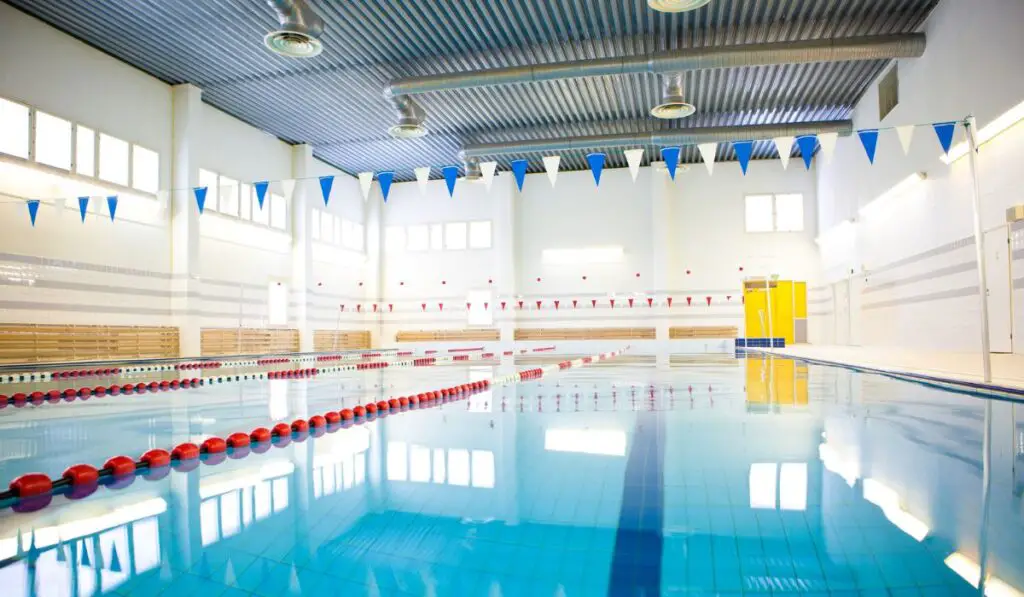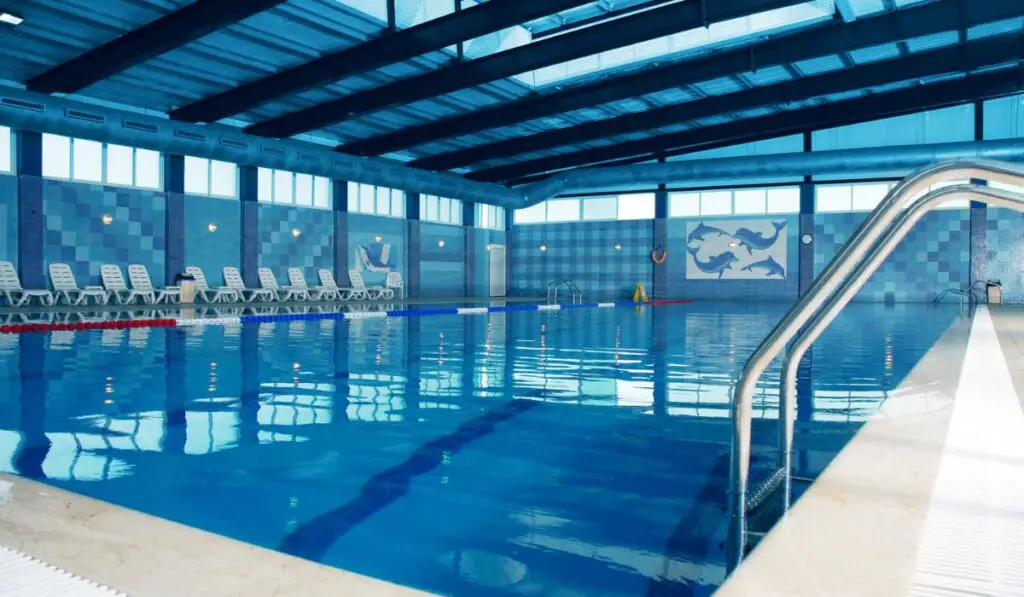If there’s one place that’s synonymous with summer, it’s the public pool. Whether you’re taking a dip after work to cool off or spending the day lounging poolside with friends, there’s no denying that public pools are a summer staple that we all enjoy. But as fun as they may be, are public pools actually safe?
Public pools are exposed to contaminants including sweat and urine which could spread disease. Proper treatment reduces this risk enough that the pool is safe. To confirm the pool is safe, first confirm that it is visually clear, and then use your own pool test strips to check for chlorine.
If you’re planning on swimming in a public pool, be aware of the risks and take the necessary precautions to protect yourself. Do your research before heading to the pool and make sure it’s well-maintained. If you see any red flags, it’s better to be safe than sorry. Let’s look at some risks related to public pools and how to stay safe.
How Safe Is It to Swim in a Public Swimming Pool?

The Centers for Disease Control and Prevention (CDC) estimates that about 80% of public pools don’t meet at least one safety standard — a pretty scary statistic. If you look at CDC’s recommendations for pool safety, it’s easy to see why so many pools are not up to par.
There are a ton of things that can make a pool unsafe, including:
- Dirty water
- Contaminated filters
- Improper pH levels
- Lack of chlorine
- Inadequate fencing
- Lack of signage
- Lack of lifeguards
And there’s probably a whole lot more that we’re not even thinking of. Basically, if a pool isn’t well-maintained, it’s not safe. And most public pools, unfortunately, don’t put the necessary effort into ensuring everything is up to par.
For this reason, swimming in public pools may not be the best idea unless you know for sure that the pool is clean and well-maintained. Even then, there are still other risks to take into consideration.
Are Public Pools Filled With Germs?
Public pools are full of germs. In fact, there is a whole group of illnesses especially related to swimming in dirty water, called “Recreational Water Illnesses” (RWI). The most common RWI is diarrhea, which is caused by germs like Cryptosporidium, E. coli, and Giardia.
Cryptosporidium, or Crypto for short, is a highly resistant parasite that comes from the feces of infected humans or animals. It’s resistant to chlorine, which means it can live in chlorinated pools for days.
And it only takes a few Crypto germs to make you sick. It causes watery diarrhea for up to 3 weeks and is especially dangerous for people with weakened immune systems.
Giardia is another parasite that causes diarrhea, gas, bloating, and nausea. It’s usually found in lakes and rivers but can also be found in poorly maintained pools.
E. coli is a bacteria that can be found in pools, and those who contract E. coli may have to deal with serious stomach cramps, fever, and vomiting.
Other RWIs include skin infections (like “hot tub rash”), ear infections, respiratory infections, and even some serious infections like meningitis and Hepatitis.
It’s important to be aware of these risks before you take a dip.
How Can You Tell if a Public Pool Is Safe and Clean?

Pool maintenance isn’t an undercover operation, so if you look around the pool area, you should be able to spot some tell-tale signs of a well-maintained pool. Here are some key techniques:
Visual Inspection
If the pool area is cluttered, there’s trash floating in the water, or the furniture looks dirty, it’s a red flag. Also, if you see dirty, murky water, that’s another sign that the pool isn’t properly maintained.
Heavy Chemical Smell
Contrary to what you might think, a pool that smells heavily of chlorine isn’t necessarily a clean pool. In fact, it might be the opposite. This type of smell is caused by chloramines, which are formed when chlorine reacts with sweat, urine, and other contaminants in the water. So if you smell this type of odor, it means there’s not enough free chlorine in the pool to disinfect the water properly.
pH Test
The ideal pH level for a pool is between 7.2 and 7.8. Too much acidity (low pH levels) can irritate your skin, eyes, and respiratory system. Too much alkalinity (high pH levels) can make it difficult for chlorine to work properly. You can test the pH yourself with the help of pool test strips (on Amazon); they’re pretty cheap and readily available online or at your local pool store.
Look for Official Inspection Reports
The health department inspects most public pools regularly, so the pool should have the latest inspection report on display. If you don’t see one, you can always ask the staff where it is.
Ask Around
If you’re still unsure about a particular pool, ask your friends, family, or neighbors if they’ve had any good or bad experiences there. People in your community can be a great resource for finding out whether a pool is safe to swim in.
The Bottom Line
Public pools can be fun, but they can also be full of germs. It’s always best to be aware of the risks before you take a dip.
If you’re ever unsure about a particular pool, consider erring on the side of caution and finding another one to swim in.
